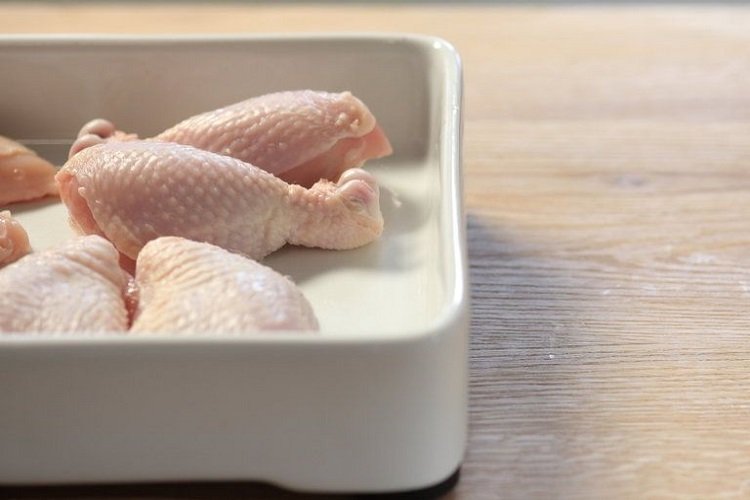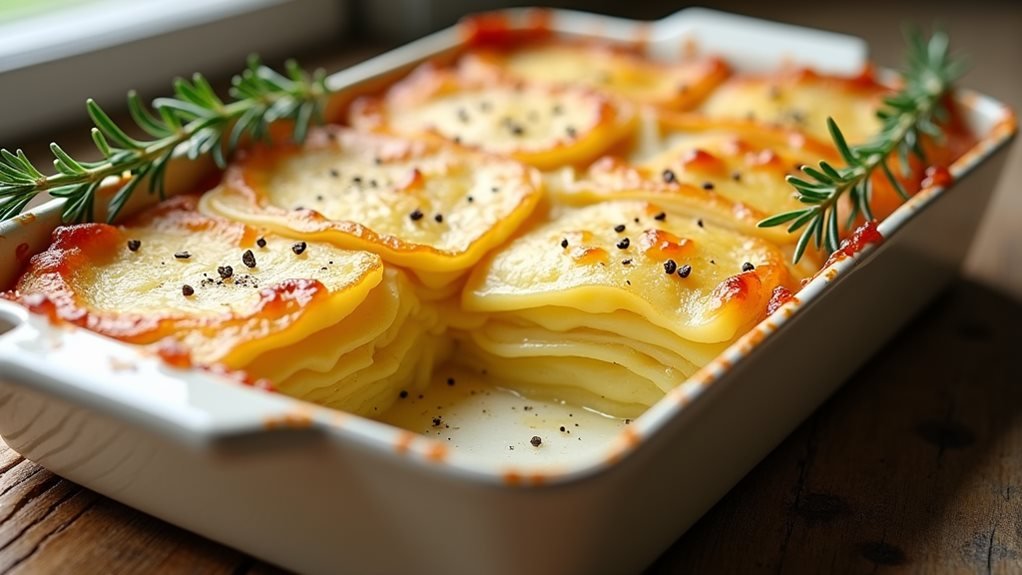A pork cut guide is useful for anyone who wants to learn more about the various cuts of pork and how they are best prepared. This guide provides information on the different types of pork cuts, including where they come from on the animal, their flavor and texture, and the best cooking methods for each cut. (Also see Carving the Perfect Meal: A Gourmet’s Handbook to the Cuts of Lamb)
The majority of pork, roasts, chops, and ribs sold in supermarkets today have little resemblance to the other white meat we ate back when I was growing up as a child; the pork was dry for the most part. New breeding techniques and feeding systems designed to slim down the modern hog have produced pork with about 1/3 less fat than 20 years ago.
While the pork available today is better for our cholesterol levels and weight on the scale, it has drawbacks. The lack of fat makes the leaner pork less flavorful and more prone to dry out during the cooking process. Today’s pork is more challenging to cook than 30 years ago, but you will be up to that challenge if you follow this guide.
Meat Cuts, Meaning, Cooking Pork Roasts, Chops and Ribs
Meat cuts refer to the different parts of an animal’s body used for food and are typically divided into sections such as the shoulder, loin, and leg. The specific cuts of meat within each section have distinct characteristics, such as texture, flavor, and tenderness, and are used for different cooking methods.
Understanding meat cuts can help you select the best cuts for your preferred cooking method, as well as help you choose the most flavorful and tender cuts for your meals.
The fact is that both pork cut chops and steaks are quite similar in how they are cut and made. So here’s a guide to the most common pork cuts.
Reading Labeling for Primary Cuts of Pork
When purchasing pork at your local supermarket, it’s important to read the labeling on the packaging to ensure you’re making an informed decision. Here are some key things to look for when reading supermarket labeling for pork:
- USDA Inspection: Look for the USDA inspection label, which indicates that the pork has been inspected and passed by the United States Department of Agriculture.
- Cut and Weight: The label should indicate the type of cut, such as pork chops or pork loin, as well as the weight of the package. This can help you determine how much you need and how much it will cost.
- Freshness: Look for a “sell-by” or “use-by” date to ensure the pork is fresh and hasn’t been sitting on the shelf for too long.
- Country of Origin: The label should indicate the country of origin for the pork. This is important as different countries have different animal welfare and food safety standards.
- Hormone-Free: Look for labeling that indicates the pork is hormone-free. Some farmers may use hormones to promote growth, but these hormones can harm human health.
- Antibiotic-Free: Look for labeling that indicates the pork is antibiotic-free. Antibiotics are often used in farming to prevent illness, but overuse can lead to antibiotic resistance.
- Organic: If you’re looking for pork that is raised more sustainably and humanely, look for labeling that indicates it is organic. The pigs were raised on an organic diet without hormones or antibiotics.
By reading the labeling on pork products, you can make an informed decision about the quality and safety of the meat you’re purchasing. Paying attention to the details and aligning with your values and preferences is important.
Enhanced Injected or Not?
Due to modern pork being so lean and somewhat bland and prone to dryness if overcooked, many producers now inject their fresh pork products with a sodium solution. This enhanced pork version is now the only option at many supermarkets, especially when buying lean cuts like the tenderloin.
If you are unsure if the pork you are considering has been enhanced or not, look for a label: if the pork has an “ingredients” label, it has been enhanced.
Enhanced pork is injected with water, salt, sodium lactate, sodium phosphates, sodium diacetate, and potassium lactate, with different flavoring components, generally adding between 7 to 15% extra weight to the pork product.
Due to being pumped full of water, the enhanced pork does cook up juicier; it has drawbacks; I find the enhanced pork texture almost spongy and the flavor overly salty and unpleasant.
I strongly recommend choosing natural pork for its superior texture and flavor and then brine (soaking in soaking water) the leaner cuts to keep them juicy.
It is also important to note that enhanced pork loses six times more moisture when frozen and thawed than natural pork, which is another reason to avoid it. ) the leaner cuts to keep them juicy.
Premium Heritage Breed Naturally Moist Pork
We are familiar with the producers’ commercials touting pork as “the other white meat” and comparing its health benefits to more commonly eaten lean white meat in chicken. They were a staple of television for years, but recently pork producers have been changing their strategy.
With diets like Keto becoming more popular and people also trending towards purchasing foods labeled as “organic,” there is a market for natural pork again.
The fat, flavor, and even deeper color of meat are making a comeback, with chefs and consumers paying a premium for specialty breeds of hogs marketed as fatter, juicier, and far more flavorful than your standard store-bought pork.
When I first tasted 100% Berkshire pork and compared it to standard supermarket pork, I found the differences astounding. The Berkshire meat had a rich, crimson color and smoky, intensely “porky” flavor.
The Berkshire meat was tender and juicy, creating an enjoyable eating experience.
In contrast, I found the supermarket pork to be bland and chewy. Not all heritage breeds are worth the extra expense as some, including Duroc, failed to impress me, but I recommend Berkshire pork if you can find it at your local supermarket or butcher shop.
Higher PH % in Pork Results Juicer Cook Meat
Studies at the NSR National Barrow Show reveal the best quality pork meat was confirmed to be 100% pure Berkshire pork. Tests go back to 1990 – 1999 for quality among the eight major swine breeds.
| Attribute | Benefit | Berkshire Rank |
| High pH Score | It doesn’t lose its moisture during cooking and stays tender. | 1st. in 6 0f 7 grades |
| Loin Drip – Moisture Loss | Much Improved quality, tenderness | 1st. in 6 0f 7 grades |
| Color Of Meat | Shoppers want darker pork meat | 1st. in 5 0f 7 grades |
| After Cooking Quality | High percent scoring for tenderness and juiciness and better consumer satisfaction | 1st. in 4 of 5 grades |
Different Cuts of Meat Pork Primal Cuts
In wholesale, there are four different cuts in the supermarket. The industry’s terminology is the primal cuts, which a butcher will turn into cuts you see at your local retail supermarket.
- Shoulder
The terms for pork shoulder cut can differ extensively depending on the area of the country. The pork shoulder cut is from the top part of the pig’s front leg. The bottom ‘arm’ part of the shoulder cut is most unusually known as the arm pork roast.
The top cut of the shoulder frequently referred to as the blade roast cut, derives from the part near the loin part and has the shoulder blade bone-in.
- Picnic Shoulder
The cuts from the hog’s arm area, or picnic shoulder, are much less expensive than the part from the shoulder blade but are very similar.
- Loin
The whole boneless pork loin is a primal cut of meat between the back legs and shoulder area. The cuts produced from this lion area are ribs, loin chops, and 2 types of roasts pork loin and tenderloin.
This area has the most tenderness cuts and has very little fat. Because the meat is very lean, it is prone to being dry when overcooked.
- Leg
The back part of the pig is often called the ham. The primal cut you see at the supermarket is usually a big roast; you can buy it fresh or cured, like ham. This is very popular for a lot of people for Easter Sunday dinner.
- Pork Side Belly
The belly area is the fattiest part of the hog; that’s where your bacon comes from, as well as spare ribs; pork belly has become very popular in the past few years.
Types of Pork Roasts
While there are many types of pork roasts, I have narrowed them down to my six favorites below:
- Boston Butt Roast
This is a big, tasty cut often called pork shoulder or Boston butt at your local supermarkets that can be as heavy as 8 lb. when purchased with a bone-in.
Many supermarkets remove the bone from pork butt to be sold in smaller pieces; normally, the roast is netted but can be hand-tied to hold the 2 pieces together.
The pork butt is ideal for slow-roasting, barbecuing, braising, or stewing. I like using it for pulled pork and shredded pork recipes like carnitas. Try substituting your traditional beef or chicken tacos or burritos with a carnitas version; you won’t be disappointed!
- Shoulder Arm Picnic
This is a very inexpensive cut (often called “shoulder picnic roast” at supermarkets). You could buy it with both bone-in and bone, and it has good amounts of heavy fat with connective tissue muscle. This is the cut I like to use when I’m slow cooking, like brazing and pulled pork.
- Boneless Blade Roast
The boneless blade roast is cut from the shoulder part of the loin and contains much fatter than other cuts from (fat adds flavor) a boneless center-cut loin roast; this is my favorite boneless roast. The blade roast is not always sold in all supermarkets.
You may need to speak with your local store butcher and ask if he can special order for you or if you have a local butcher shop you can buy from there.
- Center-Cut Loin Roast
Even though I like using the more flavorful boneless blade roast, the center-cut loin roast is more widely available in all supermarkets and is a great roasting choice. Make sure to buy a center-cut loin roast with a good size fat cap and a dece on top to make it has the best flavor and prevent it from drying out during cooking.
- Center Rib Roast
The center rib roast is often called pork, the same as beef prime rib or a rack of lamb. This little mild, practically lean roast contains alone muscle with a large fat cap for protection and is cut from between the 5th and 8th ribs due to the bones (and nearby fat) still being attached.
A better option roast I find to be is the center cut loin roast from the same muscle area, but the bones and fat are removed clean.
- Tenderloin Roast
This is the leanest and most delicate of all roasts, and It cooks very fast because it is small, usually weighing about one pound. Like beef tenderloin, you must not overcook a roast due to its lack of marbling, as doing so will ruin its texture.
Pork tenderloins are usually sold in two-piece packaging; unfortunately, those you find in the supermarket will often be enhanced and injected. Make sure to purchase tenderloins that list no sodium solution in the ingredients and read nothing more than just pork on the label.
Pork-Chop Cuts
Now that we’ve discussed my six favorite pork roasts, I will share my three pork chop cuts.
- Blade Chop
The blade chop may not be easy to find at your local supermarket. Blade Chop comes from the shoulder area toward the end of the pork loin. These chops are best suited to low and slow cooking methods that break down connective tissue, such as braising or barbecuing. They can be fatty or tough but have great flavor and keep juiciness.
- Rib Chop
Rib Chops are cut from the rib area of the pork loin. The Rib chop is recognizable by the bone extending lengthways on one side and the larger eye on the loin side muscle. The rib chops are moderately higher in fat content, making them one of the most flavorful cuts, and they will not dry out throughout the cooking process.
Because of their resistance to drying out, these chops are a good choice for higher-heat cooking techniques like grilling and searing. The rib chop is my favorite pork chop to purchase.
- Center-Cut Chop
The bone that separates the loin meat from the tenderloin muscle can recognize the Center-Cut Pork Chop. I love center-cut chops; they have a great flavor but are lower in fat, making them not as juicy as the other rib chops. Cooking a center-cut chop is challenging because the lion’s lean tenderloin part cooks much faster than the loin area.
Since the tenderloin and loin muscles area of these pork chops is divided by a large bone and or cartilage, they don’t lie flat, which makes them not a good poor for searing in a skillet. Instead, use the center cut chop for grilling but position the chop so that the tenderloin is not directly over the flame; this will help keep them from drying out.
Pork Ribs
- Baby Back Ribs
Pork Baby Back Ribs, also called loin back ribs coming from the rib section, is close to the primal’s backbone. Pork loin-center roasts and chops are from the same area as the hog, so baby back ribs are quite pricey but delicious!
The baby’s back ribs’ location also explains why they are much leaner than spare ribs and are more prone to drying out. Make sure to give your baby’s back ribs extra attention when on the grill to avoid them becoming overly dry.
- St. Louis Pork Spareribs
St. Louis Spare Ribs are cut from the underside belly of the hog after the belly is removed. That’s the reason why they are meaty ribs. They are commonly trimmed and squared off by removing the hard breastbone and tough cartilage, so the rib slab is rectangular. You’ll see them sold in the supermarket as St. Louis-style spareribs.
I prefer the St. Louis spare ribs to their regular counterparts because the brisket bone and surrounding meat are trimmed off, making for a more manageable cut that usually weighs about three pounds. The resulting narrower, rectangular rack of ribs is easier to prepare on a traditional home grill.
- Country-Style Pork Ribs
Country-Style Pork Ribs are extremely tender boneless ribs cut from the top side of the rib part, which is much fatter blade meat from the hog’s pork loin. Usually, the butcher cuts them into individual ribs and then packs several of them together.
Country-Style Pork Ribs can be braised and shredded and added to pasta sauce, adding richness and flavor to the dish. You can pound them flat, grill, or pan-sear them as pork cutlets.
- Fresh Pork Ham, Shank Side
The leg is split into two pieces, the shank end and the sirloin end. I prefer the shank end because the sirloin end contains many bones, making it very difficult when carving. The shank end is covered in thick fat and skin that you must score before roasting.
To score the ham, use your chef’s knife and make a crisscross pattern in the ham’s fat that forms diamonds along the outside. This will allow your glaze to penetrate that thick layer and flavor the meat, not just the outside. My favorite way to prepare shank is brining, then roasting.
How to Remove Skin From the Back of Ribs
- Meat-side down, place your ribs onto the cutting board and insert a knife’s tip underneath the membrane’s corner. Make certain that the blade tip is not put into the meat.
- Use gentle, saw-like motions to cut right under the membrane about one or two inches, then out of the meat’s side. This will create a small membrane flap.
- With either paper towels or your hands, use one motion to pull the slippery piece of membrane away. Take as much of it as possible, and repeat the process until the whole membrane is off the meat.








